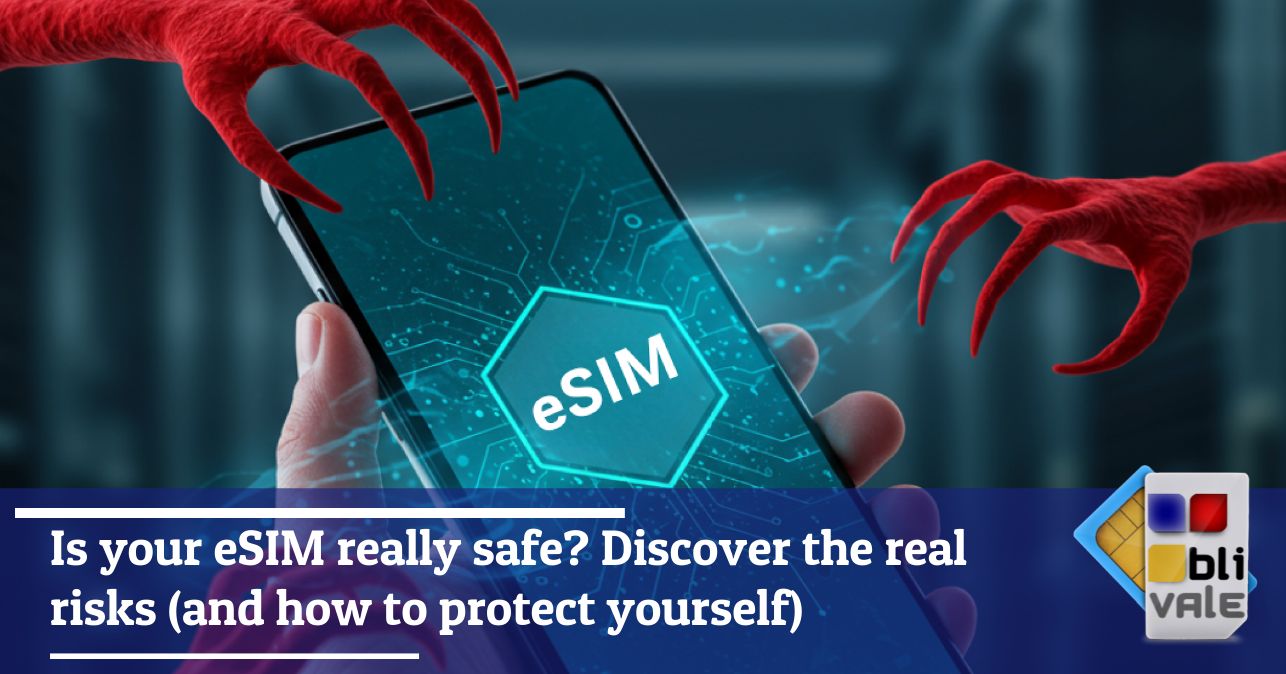You've just activated an eSIM and are wondering, "Is it really safe?" It's a legitimate question. Unlike a physical SIM card you can keep in your pocket, an eSIM lives invisibly and digitally on your phone. This makes it more convenient, but raises real security concerns. Good news: an eSIM is more secure than a traditional SIM card, but only if you know how to protect it. In this guide, you'll discover the real risks and how to protect yourself from hacking, identity theft, and SIM-swap attacks.
No, an eSIM cannot be cloned like a traditional SIM — and that's precisely why it's more secure.
With a physical SIM, you only needed physical access to the card: you could copy it, insert it into another phone, and gain access to the associated services. An eSIM, on the other hand, is an encrypted digital profile embedded in your phone's chipset. There's no "physical copy" to steal or duplicate.
But—and here's the key point—the real threat isn't traditional cloning. The real risk is SIM -swap attacks (eSIM profile theft via hacking into your carrier account) or unauthorized access to your phone. If someone gains control of your number through your carrier, they can obtain verification codes and compromise your sensitive accounts (email, banking, social media).
How eSIM security works:
An eSIM uses end-to-end encryption and digital certificates issued by the GSMA (Global System for Mobile Communications Association). Each eSIM profile is unique and tied to your specific device via its IMEI (International Mobile Equipment Identity) and an authentication code. Even if someone accesses the eSIM file, they can't activate it on another phone without these correct identifiers.
The real risks of eSIM:
SIM-swap attack : A hacker contacts your mobile operator, pretending to be you, convincing them to transfer your number to their eSIM. This is the most real risk, but it rarely happens if you have a strong operator password.
Phone Hacking : If your smartphone is compromised by malware, the eSIM profile may be vulnerable, but no more than a physical SIM would be.
Device theft : Unlike a SIM, an eSIM is locked to the phone. If you lose your device, the eSIM remains there, but the thief can't use it on another phone without unlocking the device.
Accidental deletion : You can deactivate or delete an eSIM by mistake, but this can be reversed by contacting your provider.
Comparison: eSIM vs traditional SIM
A traditional SIM is vulnerable to physical cloning and outright theft. An eSIM eliminates these risks but introduces the risk of more sophisticated digital attacks (SIM swapping). Overall, an eSIM is more secure for most users, especially if you use strong passwords and two-factor authentication.
If you are thinking of taking a trip alone or with friends or for work, do not forget the importance of staying connected wherever you are. For unlimited Internet connection, contact BLIVALE where you can get unlimited Internet according to the destinations:
For unlimited plans like data BLIVALE guarantees free roaming anywhere in the world, no additional or hidden costs. Don't let the lack of connection stop you; get ready to explore the world with freedom and spontaneity.
How to protect your eSIM:
Use a strong carrier password : Create a complex password (at least 12 characters, including uppercase and lowercase letters, numbers, and symbols) for your cellular provider account. Avoid passwords that are easy to guess.
With BLIVALE international eSIMs you don't need to create a password.
Enable two-factor authentication (2FA) : If your carrier offers it, enable 2FA with an app like Google Authenticator or Authy. Don't rely solely on SMS for verification.
Protect your phone : Use a PIN or Face ID to unlock your device. Only download apps from official stores and keep your operating system up to date.
Log in to your carrier account regularly : Check the devices connected to your number and active eSIM profiles. If you see any unusual activity, contact your carrier immediately.
Don't share your eSIM profile : Don't share your eSIM activation QR code with anyone. Each profile is personal.
eSIM Profile Backup : Some carriers offer the option to save a profile backup. If available, use it to quickly recover in the event of a problem.
Disable remote eSIM switching : Some phones allow you to deactivate your eSIM via SMS. Disable this feature to prevent remote hacking.
If you want to avoid surprises during your travels and maintain maximum security, BLIVALE offers encrypted and protected international eSIMs , with unlimited roaming in over 200 countries and regions. Security is built into the service: every BLIVALE eSIM is verified, certified, and tied to your device. Activate your eSIM in seconds, manage everything from the app, and stay connected anywhere with guaranteed protection. No hidden costs, no complications—just simple, reliable, and secure connectivity.
Conclusion
The good news is clear: an eSIM is more secure than a traditional SIM because it can't be physically cloned. The real risks are digital and preventable: a strong password, two-factor authentication, and a little attention to your carrier account are enough to ensure peace of mind. If you want complete peace of mind while traveling, try BLIVALE and discover how secure, unlimited international connectivity will change the way you travel.









